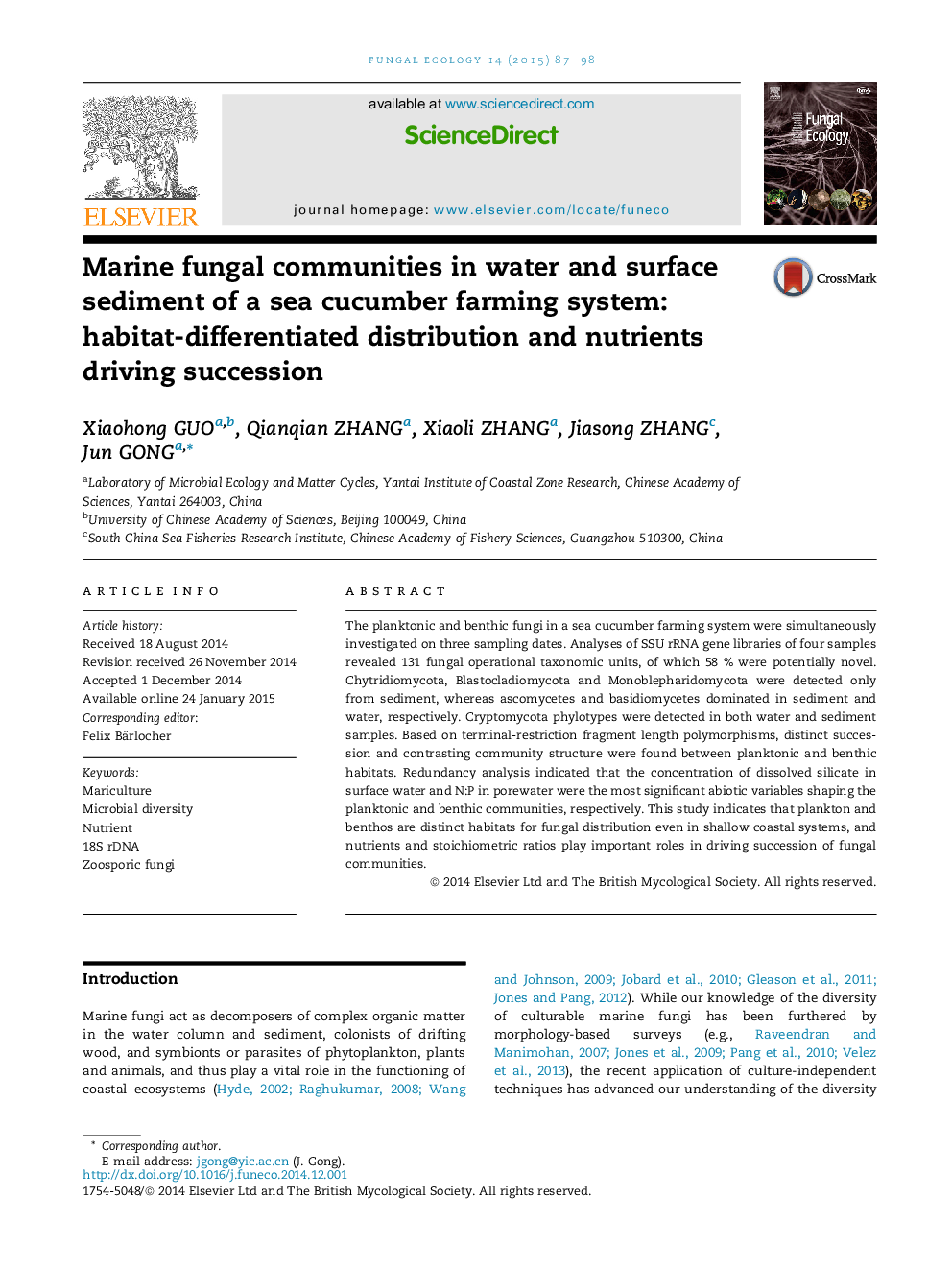| Article ID | Journal | Published Year | Pages | File Type |
|---|---|---|---|---|
| 8384583 | Fungal Ecology | 2015 | 12 Pages |
Abstract
The planktonic and benthic fungi in a sea cucumber farming system were simultaneously investigated on three sampling dates. Analyses of SSU rRNA gene libraries of four samples revealed 131 fungal operational taxonomic units, of which 58Â % were potentially novel. Chytridiomycota, Blastocladiomycota and Monoblepharidomycota were detected only from sediment, whereas ascomycetes and basidiomycetes dominated in sediment and water, respectively. Cryptomycota phylotypes were detected in both water and sediment samples. Based on terminal-restriction fragment length polymorphisms, distinct succession and contrasting community structure were found between planktonic and benthic habitats. Redundancy analysis indicated that the concentration of dissolved silicate in surface water and N:P in porewater were the most significant abiotic variables shaping the planktonic and benthic communities, respectively. This study indicates that plankton and benthos are distinct habitats for fungal distribution even in shallow coastal systems, and nutrients and stoichiometric ratios play important roles in driving succession of fungal communities.
Related Topics
Life Sciences
Agricultural and Biological Sciences
Ecology, Evolution, Behavior and Systematics
Authors
Xiaohong Guo, Qianqian Zhang, Xiaoli Zhang, Jiasong Zhang, Jun Gong,
